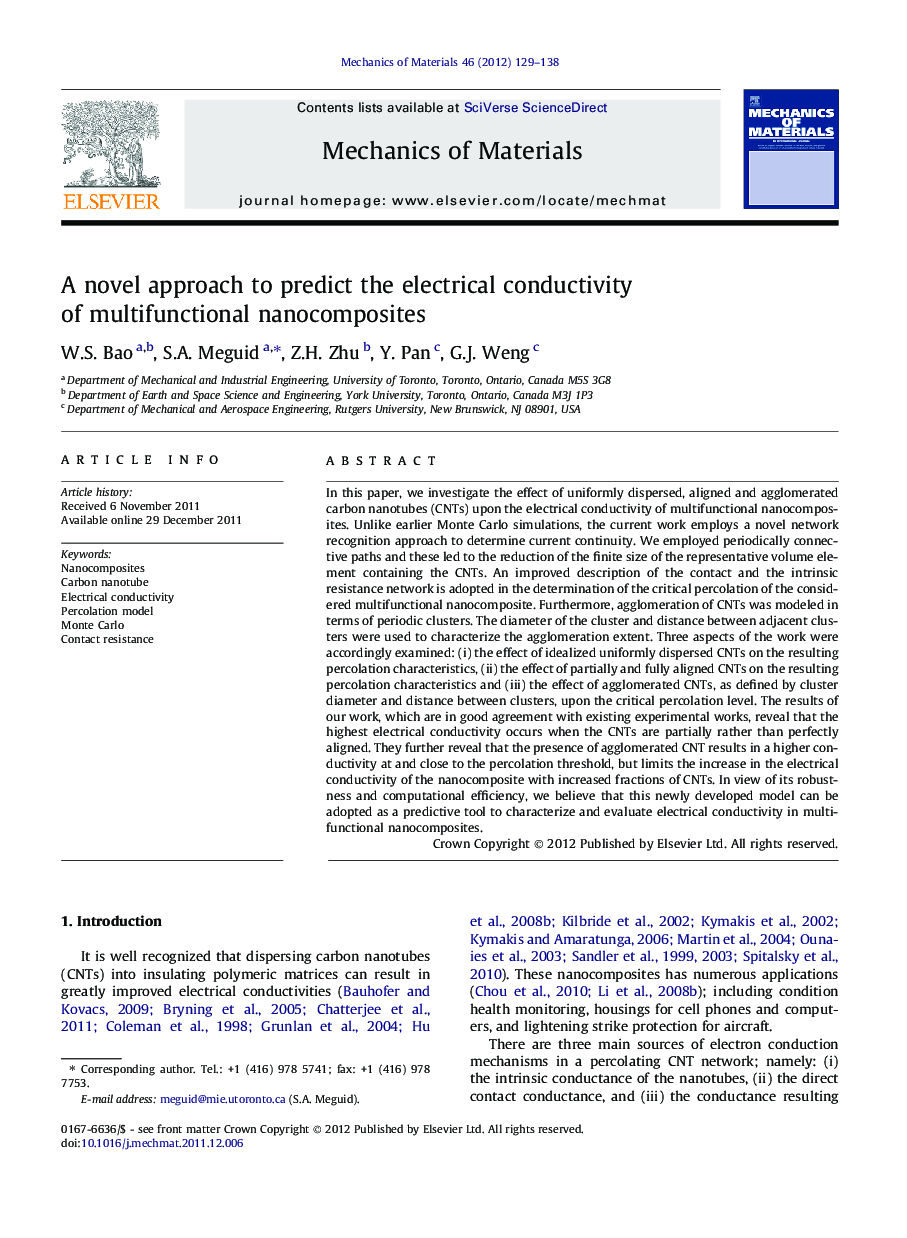| Article ID | Journal | Published Year | Pages | File Type |
|---|---|---|---|---|
| 802921 | Mechanics of Materials | 2012 | 10 Pages |
In this paper, we investigate the effect of uniformly dispersed, aligned and agglomerated carbon nanotubes (CNTs) upon the electrical conductivity of multifunctional nanocomposites. Unlike earlier Monte Carlo simulations, the current work employs a novel network recognition approach to determine current continuity. We employed periodically connective paths and these led to the reduction of the finite size of the representative volume element containing the CNTs. An improved description of the contact and the intrinsic resistance network is adopted in the determination of the critical percolation of the considered multifunctional nanocomposite. Furthermore, agglomeration of CNTs was modeled in terms of periodic clusters. The diameter of the cluster and distance between adjacent clusters were used to characterize the agglomeration extent. Three aspects of the work were accordingly examined: (i) the effect of idealized uniformly dispersed CNTs on the resulting percolation characteristics, (ii) the effect of partially and fully aligned CNTs on the resulting percolation characteristics and (iii) the effect of agglomerated CNTs, as defined by cluster diameter and distance between clusters, upon the critical percolation level. The results of our work, which are in good agreement with existing experimental works, reveal that the highest electrical conductivity occurs when the CNTs are partially rather than perfectly aligned. They further reveal that the presence of agglomerated CNT results in a higher conductivity at and close to the percolation threshold, but limits the increase in the electrical conductivity of the nanocomposite with increased fractions of CNTs. In view of its robustness and computational efficiency, we believe that this newly developed model can be adopted as a predictive tool to characterize and evaluate electrical conductivity in multifunctional nanocomposites.
► We use an improved description of the contact and the intrinsic resistance network. ► A novel network recognition leads to the reduction of the finite size effect. ► Agglomeration of carbon nanotubes is modeled in terms of periodic clusters. ► Effects of nanotube dispersions on the electrical conductivity are investigated.
